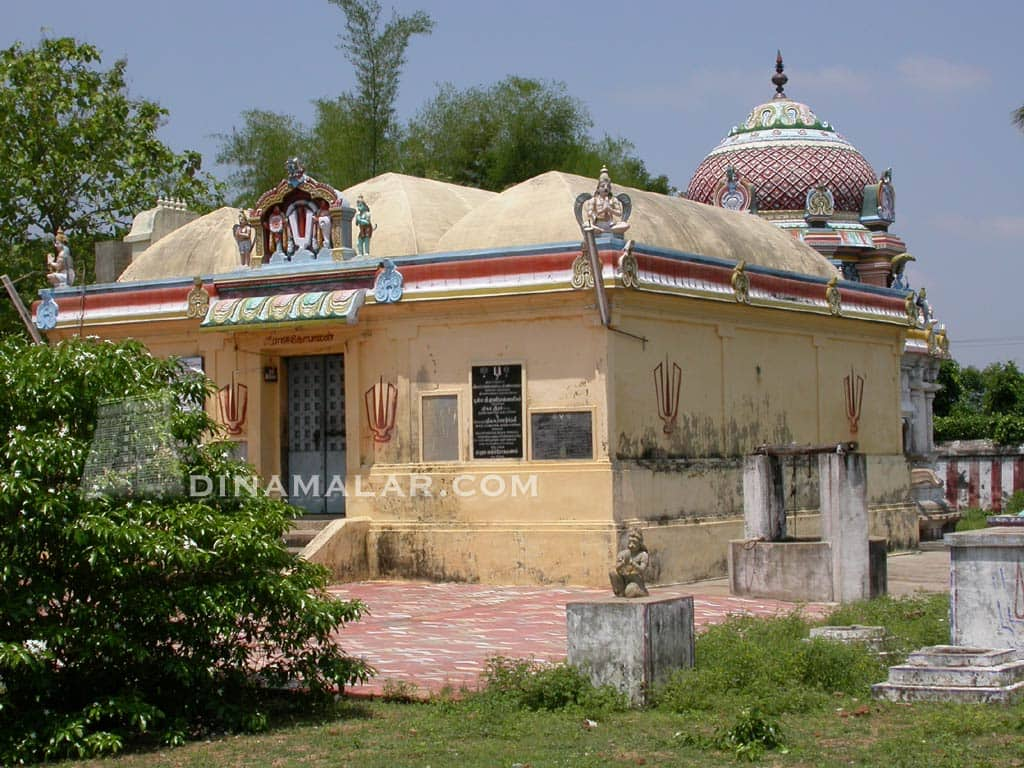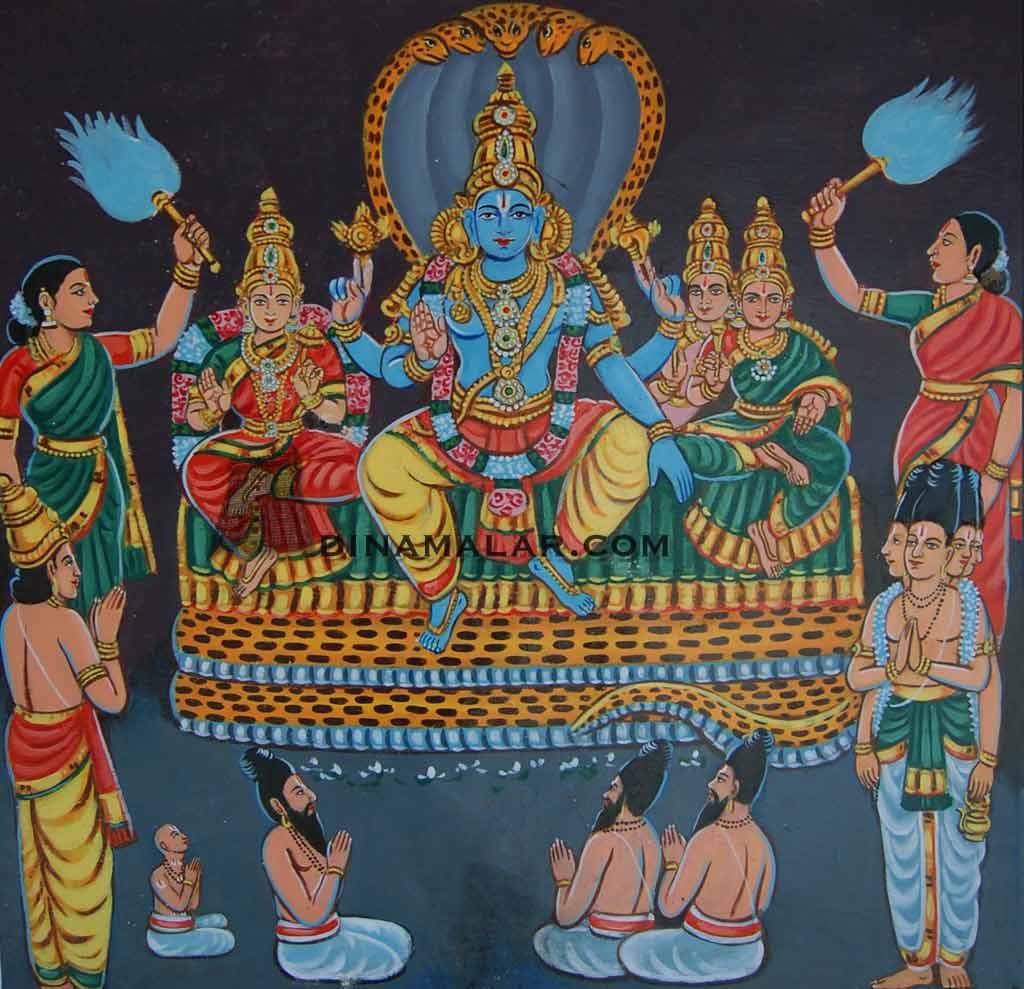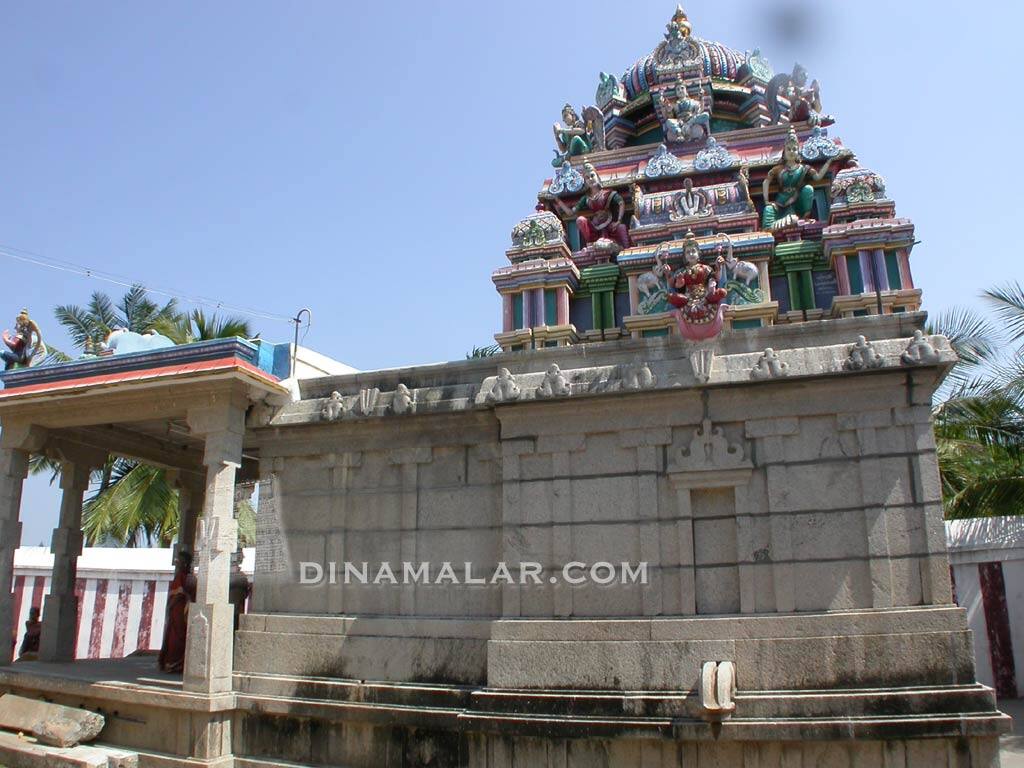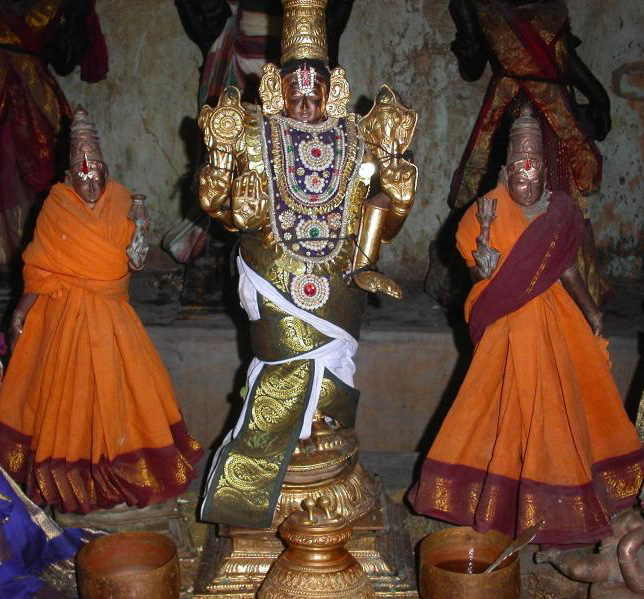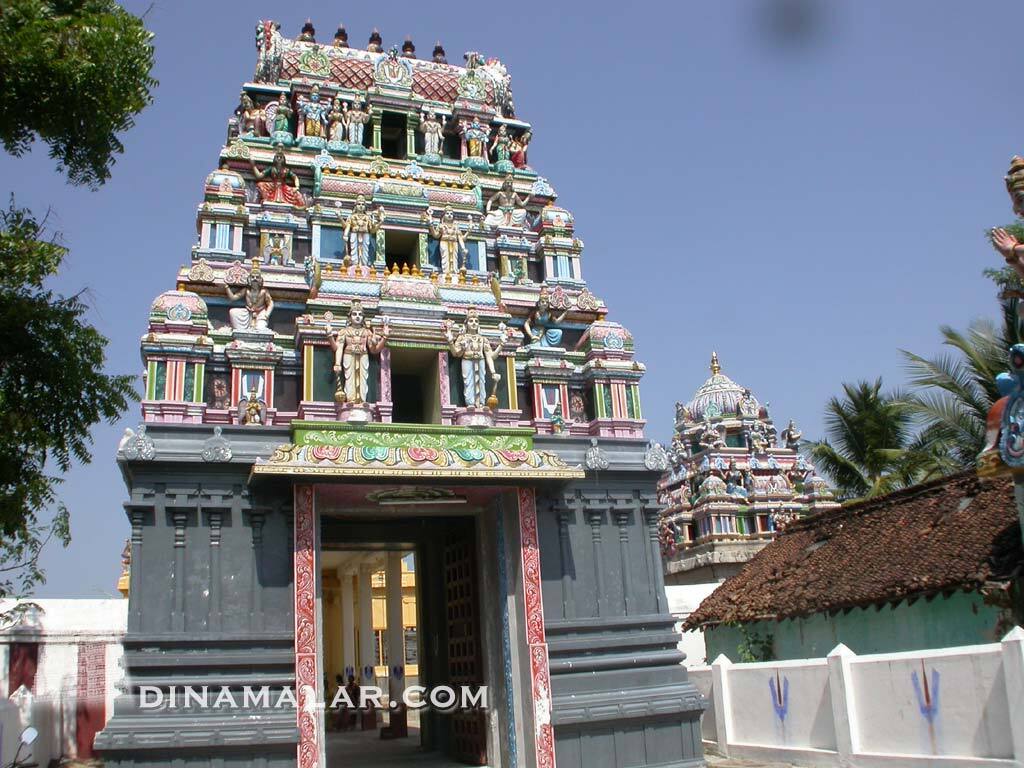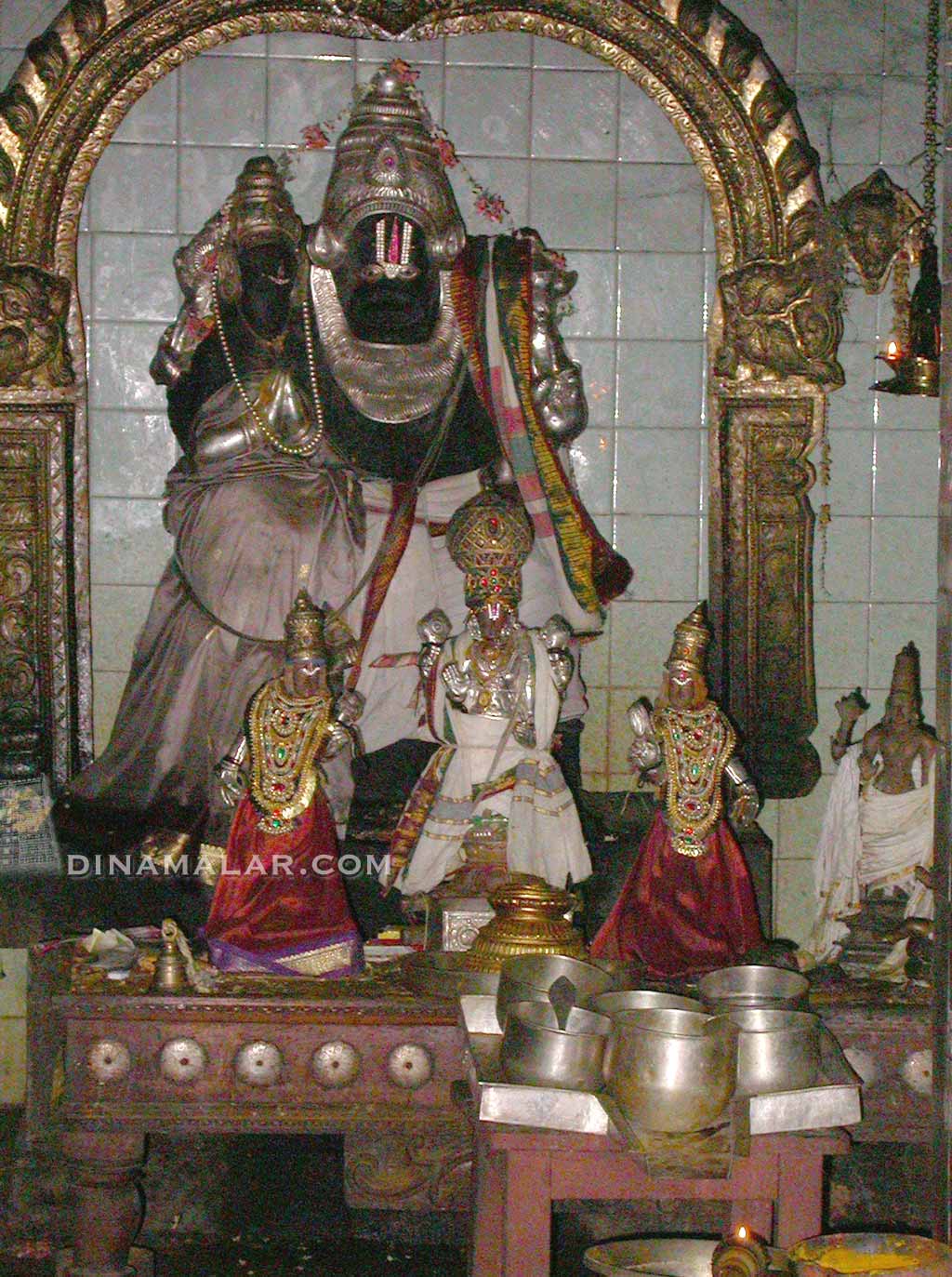GITA 9.25
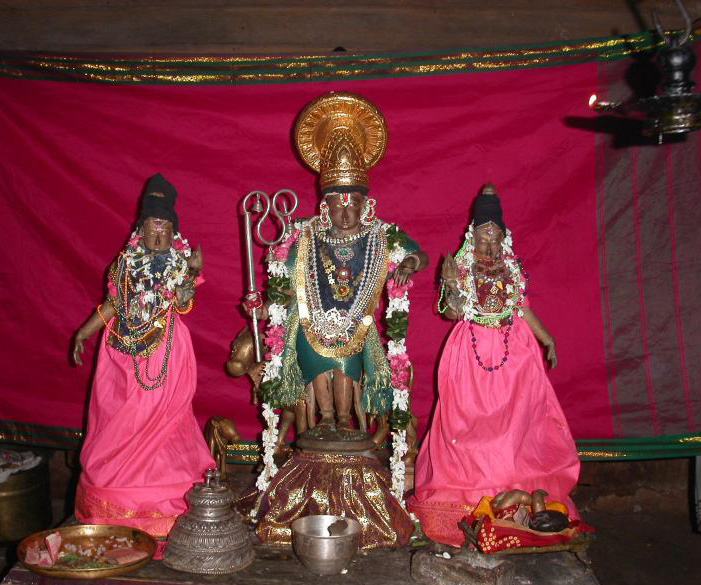 |
| UTSAVAR SRI RAJAGOPALAN |
In Tirukkavalambadi, Lord Sri Rajagopalan [Utsavar] is gracing with just two arms. Left arm is resting on the shoulder of Sri Sathyabhama and right arm is holding a whip. On His right is Sri Rukmini. There is no separate sannidhi for Sri Thayar, this is because, as Thirumangai Alwar says, on His chest is seated Sri Madavaral Mangai [மடவரல் மங்கை Periya Tirumozhi 4.6.5]. The Lord is standing with a cow and a calf. Cow or calf does not know karma yoga or gyana yoga or bhakti yoga. But still the Lord is protecting them; and so, we can also seek His protection. This is what Alwar says and addresses the Lord as God and prays for protection. Nammalwar says that if the Lord does not protect, there is none to protect(Tiruvaimozhi 5.8.8). He is the only Protector. Did He not protect all the cows and calves, for seven days in Gokulam, by lifting the hill as an umbrella, when rains lashed?
After viewing the Lord with all Consorts, our eyes should not crave for anything else and that is what the Lord said in sloka 22 [ananyas chinta...]. But there are people who worship so many other deities; He is the inner soul [antharatman] in them; so, why can't He grant them Moksham? Why stop with what they prayed for from the other gods, only? The Lord replied Arjuna, that though it was true that when they worshipped the other gods, He was the Ultimate entity worshipped. This is emphasised in Upanishads also. When a yagna is performed and a god is worshipped, the result of it is attained because the Lord in those gods reigns in them. But the persons performing the yagna should realise this. Even in our daily routines, we can see that unless we aspire to something, we can not attain them; and not just because that something was available. Colleges offer degrees, but one should strive for that and then only that degree will be conferred on one. Our worship also should be with that gyana or knowledge that the Lord is the antharatman in the god we are worshiping. Without this gyana, they are destined to get only what was prayed for. This was told in sloka 23. He told that they were performing worship not as per Vedas, He is the Ultimate, where all worships reach.
In sloka 24 for today [10th July 2008], the Lord explains this further. Any worship of any god would reach the Lord. Any yagna performed ultimately delights the Lord. How these are all targeted at Him is explained:
aham hi sarva-yajnanam
bhokta ca prabhur eva ca
na tu mam abhijananti
tattvenatas cyavanti te
bhokta ca prabhur eva ca
na tu mam abhijananti
tattvenatas cyavanti te
"I am the only enjoyer and master of all sacrifices. Therefore, those who do not recognise My true transcendental nature fall down."
Aham hi = I [ Sri Krishna] am alone, sarva yajnanam = of all the yagnas', bhokta = beneficiary, ca = and, prabhur eva = only giver of benefits in return. Tu = but, mam = My [ Sri Krishna's], tattvena = true nature is, na abhijananti = not understood [by them in this way]. Te = they, cyavanti = slip away [from not getting superior benefits and reach only inferior results]. The Lord says that He is the beneficiary of all karmas and yagnas we do. That is He is the inner soul in every other god we may worship, and ultimately receives the worship and offerings. Prabhu means the person who gives the result of the pooja or yagna performed. When someone does Jyotish homa and prays Indra for sanctioning Swarga, it is the Lord who actually gives and not Indra. But this is not understood by people, who think that it is these gods who grant them those benefits. They do not know the real stature of the Lord. They should have realised that more than anything else, it is the Lord, Who is the Inner Soul in all and Who alone is pleased with their karma and Who alone is going to grant them anything; but they have never understood this. Therefore, they slip away from superior benefits like reaching Vaikuntam; and are granted only the transient and inferior benefits, they sought. One important point we should note. Dasaratha did not have children and so he decided to perform Putrakameshti Yaga. He invited sage Risyasrunga to do the yagna. The person who gets the yagna performed is called yajamana. Yajamana himself may perform the actual karma also. But here Dasaratha was the yajamana and sage Risyasrunga was the actual performer of the karma. But the derived benefits are to go to Dasaratha and not to the sage. So, the beneficiary is different from the person doing the karma. Similarly, the yagna also was done in favour of some god. Finally, a person emerged from the holy fire and offered a vessel containing payasam [porridge like] to Dasaratha. The Lord, later on, was born as the Son of Dasaratha. The Lord, in this sloka, says that He represents everything in a yagna: the yajamana, actual performer, the holy fire, the god prayed for, the payasam, etc. He is the Inner Soul of all. Because of Him, all have their capacity or power. He performs yagna; He is worshipped, and He is the giver of results. If this knowledge is there, then one would directly approach Him. When one approaches Him, one would pray for the supreme gift of Moksham and be free from the miseries of birth and death. Worshiping Surya, Sriman Narayan grants good health. Worshiping Vayu, Sriman Narayana grants wealth. Here we may have another doubt. Suppose by worshiping Sriman Narayana for Moksham, will other gods be able to grant? No. When the Lord is worshipped, He alone grants and no other gods are involved. This is implied by the words 'aham hi'. Worshiping the Lord is also both easy and pleasant. Even for a simple folding of hands, the Lord is so pleased that He wants to shower benefits in return. He feels like a debtor and does not rest till Moksham is granted. This truth is not understood by them and so slip away from getting Vaikuntam. We will take leave of this Kshetram now.
(continued)
